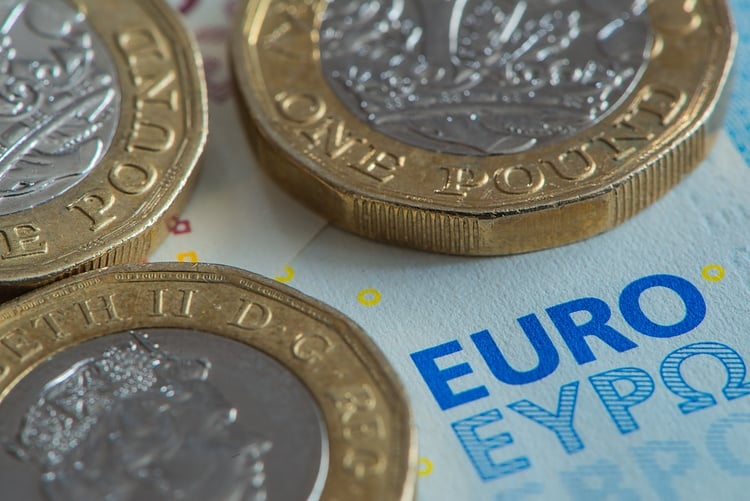Wall Street broke the record in Wednesday’s meeting, despite the initial nervousness in anticipation of the decision on interest rates, with Fed Chairman Jerome Powell launching the rally today, assuring investors that the “battle” for tackling inflation will not have a collateral “victim” of economic growth.
The meeting began cautiously, with pressure temporarily mounting after the Federal Open Market Committee (FOMC) “verdict”, which intensified its efforts to tame inflation, which continues to move close to the high of 40, raised interest rates – for for the second time this year – by 50 basis points.
At the same time, it announced the tightening of its balance sheet, which jumped to the level of 9 trillion. has been trying to shield the US economy amid the pandemic since June 1, demonstrating its determination to move more aggressively to reduce inflationary pressures. In particular, the Fed announced that from next month it will begin reducing its balance sheet, at a rate of 47.5 billion dollars per month, which will continue at the same rate in July and August, while it will expand to 95 billion dollars in September.
Investors’ nervousness was then dispelled by Fed Chairman Jerome Powell, who reaffirmed the Fed’s intention to “move quickly” to tackle galloping inflation that has hit consumers hard, but he was convinced it could. to be achieved without hurting the growth of the US economy, while even assuring that there is no risk of recession.
Powell even ruled out the possibility of the Fed raising interest rates higher than the current (50 basis points), removing investor concerns that it might raise interest rates by 0.75% in June, while stressing that a “smooth landing” of the economy is possible as households, businesses and the labor market continue to be strong.
Indicators – statistics
Powell’s comments rekindled buying interest, with the indexes plunging into a frantic rally in the final hour of the session, which led all three to nearly 3% gains and the third consecutive day of gains.
In particular, the Dow Jones ended the session with a “jump” of 932.27 points or 2.81% and regained the level of 34,000 points, closing at 34,061.06 points, which is the largest daily rise in the index since November 9, 2020, according to Dow Jones Market Data.
Similar gains were made by the S&P 500, which finished at 4,300.17 points, adding today 124.69 points or 2.99%, writing its best day since May 18, 2020.
The big winner of the day, however, was the Nasdaq, which achieved an impressive comeback as from the intra-conference losses of more than 1.5% it managed to close 401.10 points higher, with gains of 3.19% at 12,964.86 points, which is his best daily performance since March 16 of this year.
It is noted that all 30 shares of the blue chips index ended the day with a positive sign, with gains starting at + 0.74%. The title was led by Honeywell with 4.47%, followed by Caterpillar with 4.20%, 3M with 4.15% and Apple with 4.10%.
On the business “front”, Lyft’s title closed with a “dip” of almost 30%, after the announcement of the quarterly results, with its figures exceeding the market estimates but with its profit and sales estimates disappointing analysts.
On the other hand, the Airbnb share closed with gains of 7.7% after the announcement of better-than-expected results, while the Starbucks title, which announced quarterly results according to estimates due to rising costs and inflation, jumped almost 10%. , with the CEO of the company, however, noting that the “record” demand helps to accelerate the development plans of the company.
Macro
Powell’s comments also dispelled any concerns about the US economy data released ahead of the meeting, which showed a slowdown in the services sector, a widening trade deficit and a slowdown in job creation.
In particular, the activity of the services sector returned to a downward trajectory in April, according to data released by the Institute for Supply Management, showing that labor shortages, supply chain problems and high inflation “hurt” the economy. In particular, the ISM non-manufacturing index fell to 57.1 points, from 58.3 points in March, when it stopped slipping for three consecutive months.
In particular, the US trade deficit jumped 22% in March and exceeded $ 100 billion for the first time in history, reflecting the increased appetite of consumers for foreign goods, but also higher prices for oil and other products in the middle of surge in inflation. In particular, the trade deficit increased to $ 109.8 billion from $ 89.8 billion last month. Analysts’ average estimates in a Wall Street Journal poll put the deficit at $ 106.7 billion.
Meanwhile, US private-sector job growth was lower than expected in April. In particular, US companies added another 247,000 jobs last month, according to the ADP Research Institute. Analysts’ average estimates in a Reuters poll put the figure at 395,000 last month.
Source: Capital
I am Sophia william, author of World Stock Market. I have a degree in journalism from the University of Missouri and I have worked as a reporter for several news websites. I have a passion for writing and informing people about the latest news and events happening in the world. I strive to be accurate and unbiased in my reporting, and I hope to provide readers with valuable information that they can use to make informed decisions.






